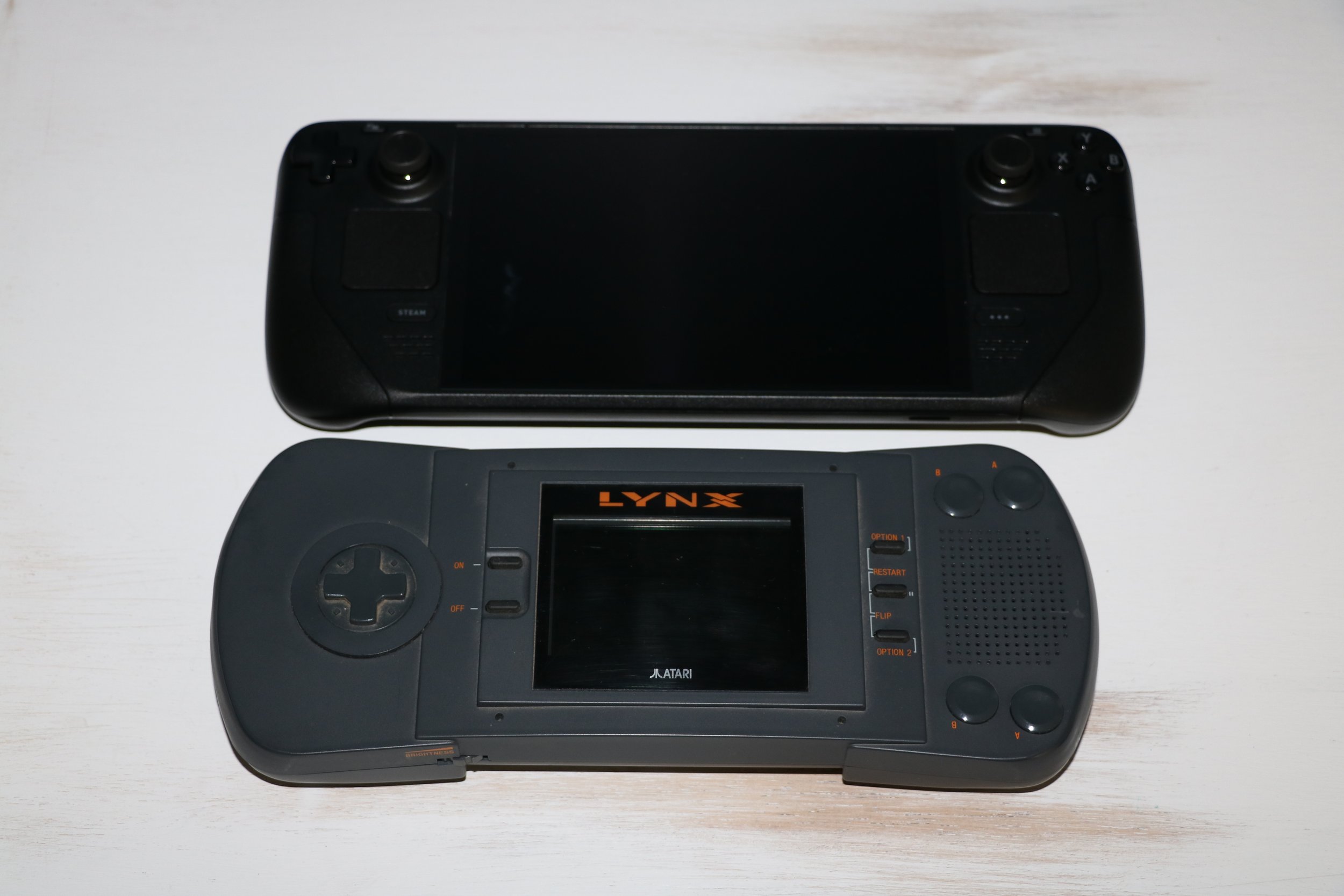Hardware Review: Valves’s Steam Deck
After years of waiting Valve surprised me with their announcement of an Australian release of their foray into handheld gaming hardware, the Steam Deck. Last month (November 2024) they became available so I jumped on the chance to see if the Steam Deck lived up to the hype.
If you click through the image carousel above, you’see see the box it came in and everything inside. The boxes themselves are fairly thoughtful with nods to imagery from the Portal series being brought into the physical world. Little touches like the security clasp being imprinted with Valve’s logo was a nice touch. Inside the boxes (that were included in the $900 AUD price, were a power adapter, suitable for use in Australia and a very nice carrying case).
I chose the OLED version of the console (and I’ll continue to call it a console from here on out as it is a self-contained, sole purpose gaming device) and I was at first a little put off by the size. But once I picked it up I realised that it was comfortably light in weight, without feeling cheap. It was also made more comfortable than Nintendo’s flat slab design by having added contoured grips on the left and right sides. I have to emphasize that the Steam Deck is comfortably light, contrary to many reviews I have heard from apparently weak-wristed reviewers.
More buttons, bigger screen has added up to a bigger footprint than Nintendo’s Switch, released in 2017.
The button and stick layout looked uncomfortable to me being too close to the top edges of the device, but again, once I used them they were comfortable and I did not give it a second thought after close to an hour of play. A button marked Steam brings up the familiar home menu of Steam Big Picture mode, making settings, your library, the Steam store and other commonly used features. On the opposite, right side of the screen is basically a “select” button.
Unlike Nintendo’s Switch the Steam Deck the added grips make it comfortable to hold for longer gaming sessions. I’ve never personally been a fan of back buttons, as they can be easily pushed by accident when gripping the controller.
On the top and back there are three “trigger” buttons on each side with four placed along the side of the grips. None of the games I played used these buttons, which is good as during tense moments of some games when I held the grips tighter, I accidently pressed them several times, revealing what could be a frustrating experience if those buttons were assigned a meaningful task in a game (like changing weapons). The top triggers felt a bit sponge-like in racing games and while playing FPS, but I’ll accept that personal preferences will range between springy triggers with longer pay length and softer triggers with shorter play. Valve has really made room for a range of genres by providing both left and right touch pads, which fortunately I had no use for in the games I played (Phil Fogg hates touchpads).
What do you call a defective paddle? Useless knob?
Both the cross pads and analog sticks were top-of-class, I only hope they have a long life, as unlike a living room-based console, you cannot merely dispose of they and get new ones once they wear out. With all this talk of buttons though, none of them are needed to navigate Steam, as the entire OLED 7.4 inch (diagonal) screen is as responsive to touch as any modern smartphone.
By design or happenstance, Valve had already mastered the console-like interface over the years in it’s “Big Picture” mode that can be used on any PC (or PC attached to a TV) to provide an easy to navigate interface to discover, purchase, play and adjust games in a virtual library. It already was the best console interface, competing with interfaces on the Nintendo, Xbox and Playstation consoles which are a varying combination of being slow, advertising laden, confusing, cluttered and slow loading.
Intelligently, Valve has merely taken Big Picture mode and directly applied it to a smaller “picture”. It is fast to load from boot, responsive, logical and while uncluttered, if you want to delve deeper adds seemingly endless options to tweak your experience.
Of the 250 games in my Steam Library (not a humble brag, I know this is a relatively small library) 222 of them are compatible with the Steam deck. I played several small independent games, a AAA game from a major publisher and a demanding first-person shooter and all them them ran smoothly and sounded great.
After following some online advice as to how to transfer already downloaded games from my PC to the Steam Deck over the LAN I foud the transfer process elegant. If a game needed and update, the Steam Deck would first download that from the internet, then instantly switch back to the LAN to transfer the game over (with a thoughtful on-screen indicator of what was happening, lest a user like myself nervously worry that precious download caps were being eroded.
One avenue of the device I did not explore was the emulation-box and alternate operating system side-loading that Valve has made possible by making the Steam Deck entirely open. This would of course add extra value, but for me possibly also introduce instability and jank to what is a pristine experience as it is. If I want to dabble in alternatives, there are plenty of other devices to corrupt, but doing so to the Steam Deck seemed equivalent to replacing a rag top on a convertible to a hard shell. If you want that, buy a sedan.
I cannot fault the Steam Deck. The hardware has a high-quality feel that is comfortable. The number of input options are generous and their placement is equally comfortable. The interface is the best-in-class. The games play well, and the display is flawless.


















